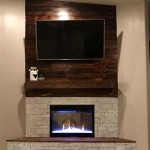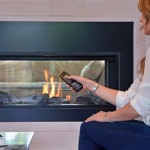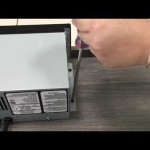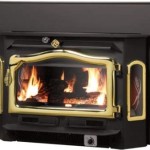What Is A Direct Vent Gas Fireplace?
A direct vent gas fireplace is a type of gas-fueled heating appliance designed to provide supplemental heat and aesthetic ambiance to a living space. It distinguishes itself from other fireplace types through its unique combustion and venting system. This system prioritizes safety, efficiency, and indoor air quality by completely isolating the combustion process from the interior environment of the home. Understanding the mechanics and advantages of a direct vent gas fireplace is crucial for homeowners considering installing or upgrading their heating solutions.
Unlike traditional wood-burning fireplaces or vent-free gas fireplaces, a direct vent system operates as a sealed unit. The "direct vent" designation refers to the appliance's ability to draw combustion air directly from the outdoors and expel exhaust gases directly back outside, without relying on or affecting the air within the living space. This sealed environment is achieved through a dual-chambered vent pipe system – one pipe draws fresh air in, while the other expels combustion byproducts.
The Mechanics of a Direct Vent System
The core functionality of a direct vent gas fireplace hinges on its specific venting setup. As mentioned, this setup invariably utilizes a two-pipe system. Typically, one pipe (often the inner pipe) is responsible for expelling the exhaust gases produced during combustion. The other pipe (commonly the outer pipe) simultaneously draws fresh air from the outside to fuel the burning process. This counter-flow design not only provides the necessary oxygen for combustion but also helps preheat the incoming air, contributing to the appliance's overall efficiency.
The vent pipes themselves can be made from various materials, typically consisting of aluminum or stainless steel. They are designed to withstand high temperatures and corrosive exhaust gases. The venting can exit the building either horizontally through a wall or vertically through the roof, offering installation flexibility. Horizontal venting is frequently preferred due to its lower installation cost and relative ease of access for maintenance. Vertical venting becomes a necessity when horizontal options are limited by building codes or architectural constraints.
The sealed combustion chamber is a vital component. This chamber ensures that all combustion occurs within a sealed environment, preventing any exhaust gases or byproducts from entering the room. This greatly reduces the risks associated with carbon monoxide poisoning and other indoor air contaminants. The gas burner itself is designed for optimal efficiency and clean burning, further minimizing emissions.
Advantages of Direct Vent Gas Fireplaces
Direct vent gas fireplaces offer several advantages over other fireplace options, making them a popular choice for modern homes. These advantages stem primarily from the sealed combustion and venting system.
One of the most significant benefits is improved indoor air quality. Because the combustion process is completely isolated from the living space, there is minimal risk of carbon monoxide leaks or the introduction of other harmful pollutants. This makes direct vent fireplaces a safer option for households with children, the elderly, or individuals with respiratory sensitivities.
Another key advantage is energy efficiency. Direct vent fireplaces are generally more efficient than traditional wood-burning fireplaces. The sealed combustion chamber and the preheating of incoming air contribute to higher heat output with lower fuel consumption. This can result in reduced heating costs over time. Furthermore, many models offer adjustable heat settings, allowing homeowners to precisely control the amount of heat produced, further enhancing energy conservation.
Installation flexibility is another substantial benefit. Direct vent fireplaces do not require a traditional chimney, which simplifies the installation process and reduces construction costs. The availability of both horizontal and vertical venting options provides greater flexibility in terms of placement within the home. This makes direct vent fireplaces suitable for a wider range of homes, including those without existing chimneys or those with limited space.
Safety Considerations and Maintenance
While direct vent gas fireplaces are generally safe, adhering to safety guidelines and performing regular maintenance are crucial. Proper installation is paramount, and it is highly recommended to have the appliance installed by a qualified professional. A certified installer will ensure that the venting is correctly installed and sealed, minimizing the risk of leaks or malfunctions. The installer will also ensure compliance with all local building codes and regulations.
Regular maintenance is also essential for the safe and efficient operation of the fireplace. This includes inspecting the venting system for any signs of damage or deterioration. The burner assembly should be cleaned periodically to remove any debris or buildup that could impede proper combustion. It is also advisable to have the fireplace professionally inspected and serviced annually to ensure that all components are functioning correctly.
Homeowners should also install and maintain carbon monoxide detectors in their homes, regardless of the type of fireplace they have. Carbon monoxide detectors provide an early warning in the event of a leak, allowing occupants to evacuate the premises and seek medical attention if necessary. Regular testing of these detectors is essential to ensure that they are functioning correctly.
Understanding the principles behind direct vent technology allows homeowners to make informed decisions regarding their heating needs, prioritizing safety, efficiency, and environmental responsibility.
Understanding How Direct Vent Works Heat Glo
.aspx?strip=all)
Benefits Of Direct Vent Fireplaces Regency Fireplace S

What Is A Direct Vent Fireplace Fireplaces Learning Center

Benefits Of Direct Vent Fireplaces

Gas Fireplaces Direct Vent Vs Free Fine Homebuilding
.aspx?strip=all)
Benefits Of Direct Vent Fireplaces Regency Fireplace S

What Is A Direct Vent Fireplace Fireplaces Learning Center

Vented Vs B Vent Direct Free Dixie S

Direct Vent B Gas Free S Mazzeo Stoves Fireplaces

What Is A Direct Vent Fireplace Fireplaces Learning Center
Related Posts








